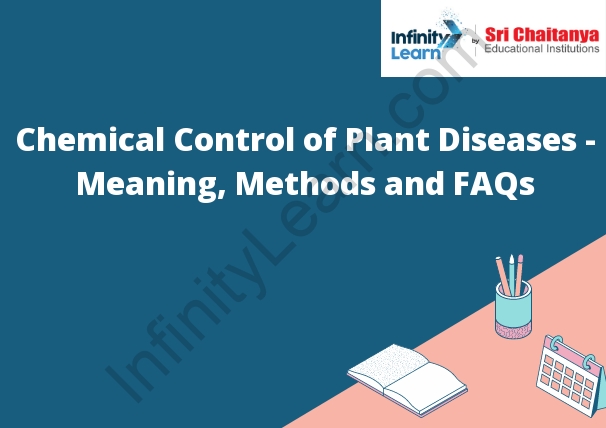Table of Contents
Plant Diseases
A plant disease is a condition that affects the health of a plant. Plant diseases can be caused by pathogens such as bacteria, viruses, and fungi, or by abiotic factors such as pests, drought, and frost. Chemical Control of Plant Diseases – Meaning Methods and FAQs.
Plant diseases can cause a variety of symptoms, including wilting, chlorosis, stunting, and death. Many plant diseases can be controlled through the use of pesticides, but some diseases, such as apple scab and potato blight, are resistant to pesticides.

Control of Plant Diseases
The control of plant diseases is a process that is used to prevent or stop the spread of diseases that affect plants. There are a number of different ways that this can be done, including using pesticides, using resistant cultivars, and using cultural methods.
How to Control Plant Diseases?
There are many ways to control plant diseases. One way is to use pesticides. Another way is to use crop rotation. Crop rotation is when you grow different types of crops in a certain area of land. This will help to keep the diseases from spreading. You can also use biological control. This is when you use natural enemies of the disease to help control it.
Chemical Control of Plant Diseases
The use of chemical agents to control plant diseases is a widespread practice. The objectives of chemical control are to prevent the disease from occurring, to reduce the severity of the disease if it does occur, and to stop the spread of the disease. The choice of a chemical control agent is based on the diagnosis of the disease, the life cycle of the pathogen, and the environmental conditions.
The most common chemical control agents are fungicides. Fungicides are classified according to their mode of action. Some fungicides inhibit the synthesis of fungal cell walls, some inhibit the production of enzymes, and others inhibit the uptake of nutrients. Fungicides are applied as sprays, dusts, or powders. In addition, some fungicides are applied as soil amendments before planting.
Another type of chemical control agent is an herbicide. Herbicides are used to control weeds, which can compete with crops for nutrients, water, and light. Herbicides are classified according to their mode of action. Some herbicides inhibit the synthesis of plant cell walls, some inhibit the production of enzymes, and others inhibit the uptake of nutrients. Herbicides are applied as sprays, dusts, or powders.
Control of Crop and Forest Disease
There are a number of ways that farmers and foresters can manage crops and forests to reduce the chances of disease. One way is to plant resistant varieties of crops or trees. For example, there are many different types of apple trees, but only a few of them are resistant to the apple scab fungus. If a farmer is growing apples, they should plant a resistant variety to reduce the chances of their crop becoming infected.
Farmers and foresters can also manage the environment to reduce the chances of disease. For example, they can create buffer zones around crops and forests to reduce the chances of pests and diseases from entering the area. They can also prune trees and remove dead leaves and branches to reduce the chances of disease.
Chemical Control Methods
There are a variety of chemical control methods that can be used to manage pests. These include chemical pesticides, herbicides, and fungicides.
Pesticides are chemicals that are used to kill pests. They can be used to kill insects, rodents, or plants. Herbicides are chemicals that are used to kill plants. They can be used to kill weeds or unwanted vegetation. Fungicides are chemicals that are used to kill fungi.
Chemical Control of Plant Diseases – Meaning Methods and FAQs.








